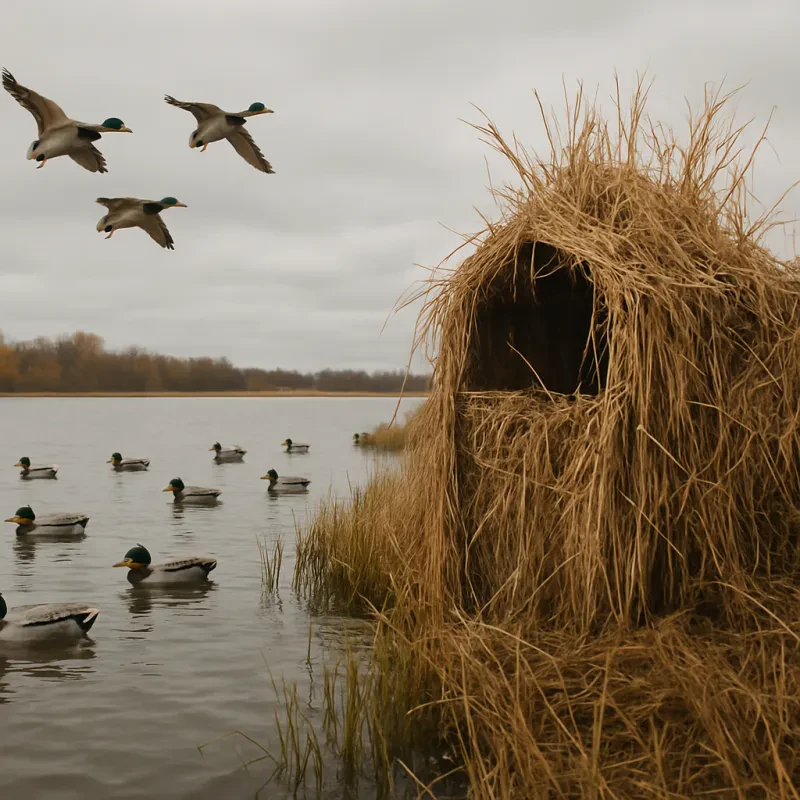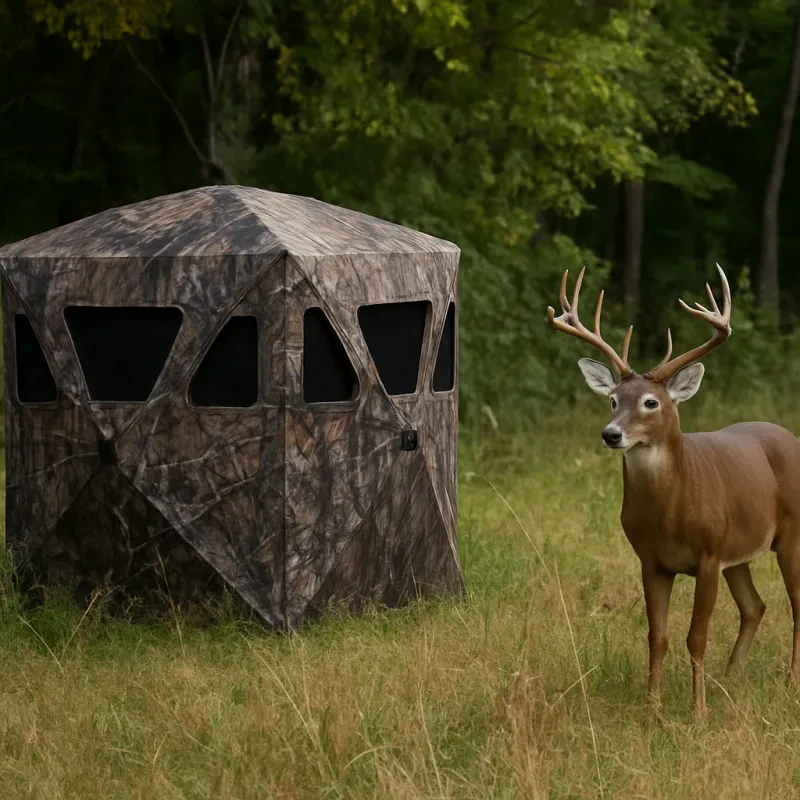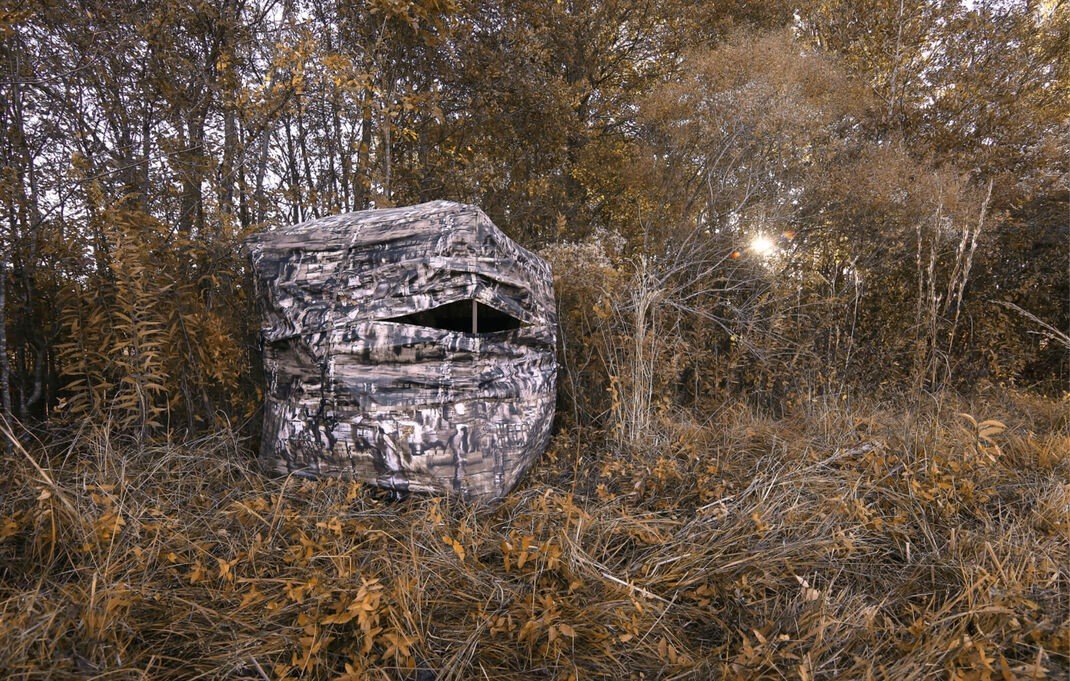When it comes to choosing the right hunting blind, one of the main options to consider is the difference between hard-sided and soft-sided models. Understanding the characteristics of hard-sided hunting blinds can help hunters make an informed decision for their specific needs. These blinds are constructed from durable materials like wood, metal, or rigid plastic, providing a solid structure that can withstand harsh weather conditions.
One of the significant advantages of hard-sided hunting blinds is their stability. Unlike soft-sided blinds, which can be affected by wind and weather, hard-sided models remain sturdy and reliable. This stability adds to the overall comfort, allowing hunters to focus on their surroundings without worrying about the blind collapsing during a sudden gust. Additionally, the thick walls of hard-sided blinds provide better insulation, keeping hunters warmer during cold weather.
Another key aspect of hard-sided hunting blinds is their longevity. With proper care, these blinds can last for many hunting seasons. They are less susceptible to wear and tear from elements like moisture and pests, making them a worthwhile investment for avid hunters. Moreover, the solid walls offer enhanced soundproofing compared to their soft-sided counterparts, allowing hunters to move quietly and avoid scaring away game.
However, it’s essential to weigh the pros and cons of hard-sided vs. soft-sided hunting blinds. While hard-sided options provide durability and weather resistance, they can be heavier and less portable than soft-sided blinds. This could be a deciding factor for hunters who need to move their blinds frequently or travel long distances. Understanding these trade-offs is crucial to choosing the best type of blind for your hunting adventures.
Exploring Soft-Sided Hunting Blinds
When it comes to choosing the perfect hunting blind, understanding the differences between hard-sided and soft-sided options is essential. Soft-sided hunting blinds offer unique advantages that make them popular among hunters. Lightweight and portable, these blinds can easily be transported to various locations, allowing for greater flexibility in your hunting strategy.
One of the key benefits of soft-sided hunting blinds is their stealth. Made from durable fabric, these blinds can blend into natural surroundings, making it harder for animals to detect hunters inside. This increased concealment can lead to more successful hunts, especially in areas with a high traffic of wildlife. Additionally, many soft-sided options are designed to set up quickly, which is a significant advantage when you need to get settled before the action starts.
Moreover, soft-sided hunting blinds often come with features that enhance comfort and convenience. Many models include mesh windows for ventilation and 360-degree viewing, allowing hunters to keep an eye on their surroundings without being exposed. The variability in size also means that hunters can choose a blind that suits their specific needs, whether hunting solo or with a group.
In a comparison of Hard-Sided vs. Soft-Sided Hunting Blinds, soft-sided versions shine in terms of portability and ease of setup. While hard-sided blinds offer sturdiness and protection from the elements, soft-sided options are finely tuned to meet the dynamic demands of active hunters. Each type has its merits, but soft-sided blinds are a versatile choice for hunters who value mobility and camouflage.
Pros and Cons of Each Type
When it comes to choosing between hard-sided and soft-sided hunting blinds, each option comes with its own set of pros and cons. Understanding these differences can help hunters make a more informed decision based on their specific needs and preferences.
Hard-sided hunting blinds are known for their sturdiness and durability. One of the biggest advantages is their ability to withstand harsh weather conditions. They keep you dry during rain and provide excellent insulation from the cold, making them ideal for hunting in winter months. Additionally, hard-sided blinds often come with superior soundproofing, which can help you avoid detection by wary animals. However, the main downside is their weight and bulkiness; transporting and setting them up may require more effort compared to soft-sided options.
On the other hand, soft-sided hunting blinds offer a level of versatility and convenience that is hard to match. These blinds are generally lightweight and easy to transport, allowing hunters to set up in various locations with minimal hassle. They are also often more affordable than their hard-sided counterparts, making them an attractive option for budget-conscious hunters. However, soft-sided blinds have their drawbacks. They may lack the same level of protection against the elements and can be noisier, which may scare off animals if hunters aren’t careful.
Ultimately, when evaluating the hard-sided vs. soft-sided hunting blinds debate, consider your typical hunting environment and personal preferences. Whether you prioritize comfort and weather resistance or mobility and cost, weighing these pros and cons can guide you to the best choice for your next hunting expedition.
Choosing the Right Blind for You
Hard-sided blinds are typically more durable and offer better protection from the elements. They provide greater insulation and can keep you warm during cold hunts. Additionally, hard-sided blinds can withstand harsher weather conditions, making them a reliable choice for long-term use. If you hunt in areas with frequent storms or extreme temperatures, a hard-sided blind may be the way to go.
On the other hand, soft-sided blinds are often lighter and easier to transport. They can be quickly set up and taken down, which is perfect for hunters who like to change locations often. Soft-sided hunting blinds typically offer a quieter approach, as they can blend into the environment more seamlessly. If you plan on hunting in wooded areas or fields where stealth is essential, a soft-sided blind might serve you better.
Another factor to consider in the Hard-Sided vs. Soft-Sided Hunting Blinds debate is your budget. Generally, soft-sided blinds tend to be more affordable than their hard-sided counterparts. However, it’s essential to weigh the cost against the features and durability you'll need. Think about how often you'll use the blind and for what type of hunting, as this can impact your investment decision.
Ultimately, the choice between hard-sided and soft-sided hunting blinds comes down to your individual preferences and requirements. By carefully considering the factors mentioned, you can select the blind that best fits your style and enhances your hunting experience.


